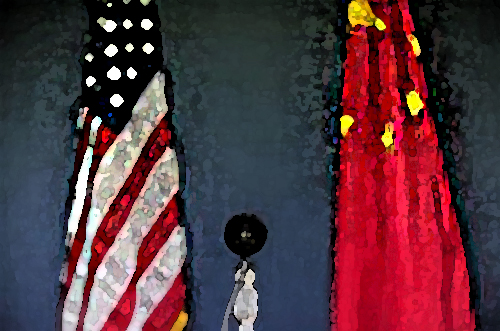China and world: Global opportunities at political risk
Whether China constitutes such a grave risk that the world must decouple and contain it or whether we can learn to live with a rising China is the question of our age. For now, the BRI is meeting a demonstrated need in the developing world
China is preparing for a leading role in the future world economic order.
A closer look, therefore, at the Belt and Road Initiative (BRI) and China’s new institutions and platforms for geo-economic influence can help to understand and manage the risks ahead.
For the last few decades, the West cautiously welcomed China’s rise, as China progressively implemented its own version of the East Asian development model. China became embedded in global supply chains and interdependent with the major economies, including the United States.
While the US maintained global predominance, China’s rise posed no threat, particularly because many held the expectation that China would democratise as it marketised. However, it was not going to do so.
In the last few years, China and the US have been locked in a geopolitical contest for supremacy. In this context, China’s BRI, a plan to build new infrastructure links to the developing world and beyond, to reshape trade routes and supply chains, is interpreted as a geopolitical threat to the West.
The challenge is very different, though, from the one posed by the Soviet Union in the previous generation.
The BRI is at least in theory built on the free trade and investment principles of globalisation. China will become the new hub for this next envisaged phase of globalisation.
More than 125 countries have signed up for joint projects.
To be sure, there are risks in this ambitious programme of development across a diverse range of countries. While making investment projects, there have been examples of poor planning, lack of transparency and misunderstanding of local conditions.
But none of these problems were specific to the Belt and Road or, indeed, to Chinese firms.
With the growing power and influence of China, it is generating anxiety and fear in the US and in many other countries. It is claimed China’s Belt and Road will create debt traps, cyber-attacks, asset seizures, militarisation of assets and undermine the norms of the liberal international order.
China is financing the vast infrastructure projects of the Belt and Road with US dollar reserves earned from its unbalanced trade with the US, dispensed in a combination of commercial loans, concessional finance and aid.
It has created a new multilateral institution, the Asian Infrastructure Investment Bank. In Asia, steady development has generated a deficit of infrastructure, and the new institution is an interesting test of how China might play a greater leadership role in the multilateral system in future. US fears that it would undermine the World Bank and International Monetary Fund seem, to date at least, to be unfounded. The biggest risk of China creating a new institution seems to have been that China would do so effectively.
China’s private sector firms are also making waves. Huawei has become a world leader in high speed 5G communications, the platform for transformative new technologies known as the fourth industrial revolution.
Together with other Chinese tech firms, it is building a “digital silk road” to developing countries, constructing not only communications networks but facial recognition and other “smart city” applications that are feared to be building blocks of a surveillance state. In the new geopolitical contest, Huawei is claimed to be a vector for cyber espionage and potential sabotage.
The US push to decouple from Chinese supply chains has become a case study. It would appear prudent to ensure a diverse chain of suppliers, so that no one country dominates the technology of the future.
Some of the infrastructure projects of the Belt and Road have been loaded with debt, and projects in Myanmar, Malaysia and Pakistan have been downscaled or cancelled.
The most important project is the Hambantota port in Sri Lanka, which US Vice President Pence claimed was “debt trap diplomacy” and would “soon become a forward military base” for China. On closer investigation, most of Sri Lanka’s debt was not to China at all, and the Sri Lankan Government of the time actively sought the deal with China Merchants Group to manage the port (in exchange for debt forgiveness). The deal specifically excluded military uses.
A Rhodium study of 40 cases of Chinese lending to 24 countries over a decade found no evidence that China was deliberately trapping countries in debt.
Rather, China has agreed to significant amounts of debt rescheduling, often on favourable terms to borrowers.
At a Belt and Road Forum in Beijing last year, Xi Jinping pledged projects would be pursued according to internationally accepted rules, standards and best practices to ensure debt sustainability, as well as combating corruption.
To be sure, there are new risks in this new world. China is threatening the predominance of the US in the global system, and, therefore, geopolitical contest is the new normal. China is not liberalism, its trenchant lack of transparency and its tendency to throw its weight around provoke justified fears and concerns.
Whether China constitutes such a grave risk that the world must decouple and contain it or whether we can learn to live with a rising China is the question of our age. For now, the BRI is meeting a demonstrated need in the developing world. It may be that the best risk strategy is to assess each project on its merits, for European and other firms to find ways to collaborate and ensure best practices.
For governments, finding ways to work with China within the rules and standards of international trade and investment may be a more proportionate strategy for risk management, rather than wishing China away. But much depends on China itself. We, therefore, must keep a clear eye.
As Ronald Reagan once said, in a different era, “trust, but verify”.






